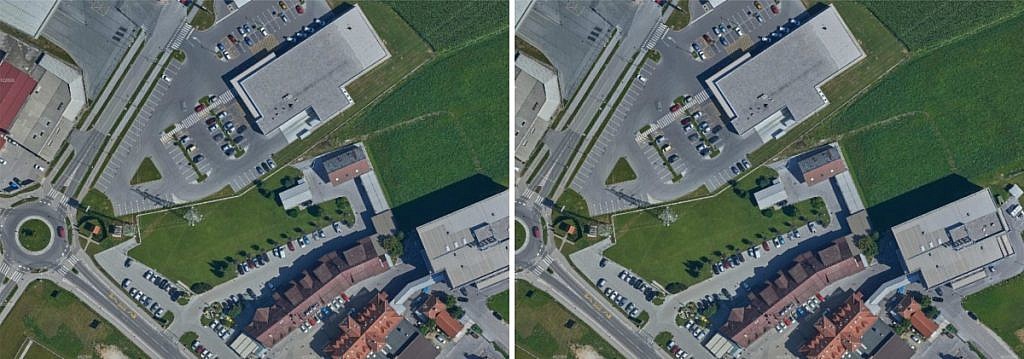
In the photogrammetry for the creation of point clouds, digital 3D models and orthophoto maps a stereo pair of aerial photographs is used. These are two aerial photographs showing part of the same area and the coverage position is somewhat offset. The stereo pair is two shots photographed from different positions and overlapping with each other (at least 50%).
When using a stereo pair, it is about imitating how a person detects space with the left and right eye. The human brain creates 3D space perception after automatically processing images from both eyes. According to a similar principle, one aerial photograph of a stereo pair is a picture that can be seen with the left eye, while the other aerial photograph represents an image that can be seen with the right eye. When we cover both photographs by matching the same details, we get a stereo-area – from this, we can create a virtual 3D model of the observed space by means of appropriate stereoscopic procedures. In the rough, the importance of stereo pair is transformation of two 2D images into one 3D model of the stereo area.
Finding matching points on both shots that represent the same detail in nature is called an image matching process. The matching points can be found only on the overlapping parts of aerial photographs, so they are covered by a high portion of overlap – that is at least 50%.
The photogrammetric construction of a 3D point cloud begins with the identification of matching characteristic points on aerial photographs. The methods of this recognition are based on computer vision and stereoscopic algorithms that calculate all three coordinates of a single point of view from aerial photography from para-matching points on aerial photographs and known internal and external parameters of the camera at the time of activation, which is the basis for any 3D model.
